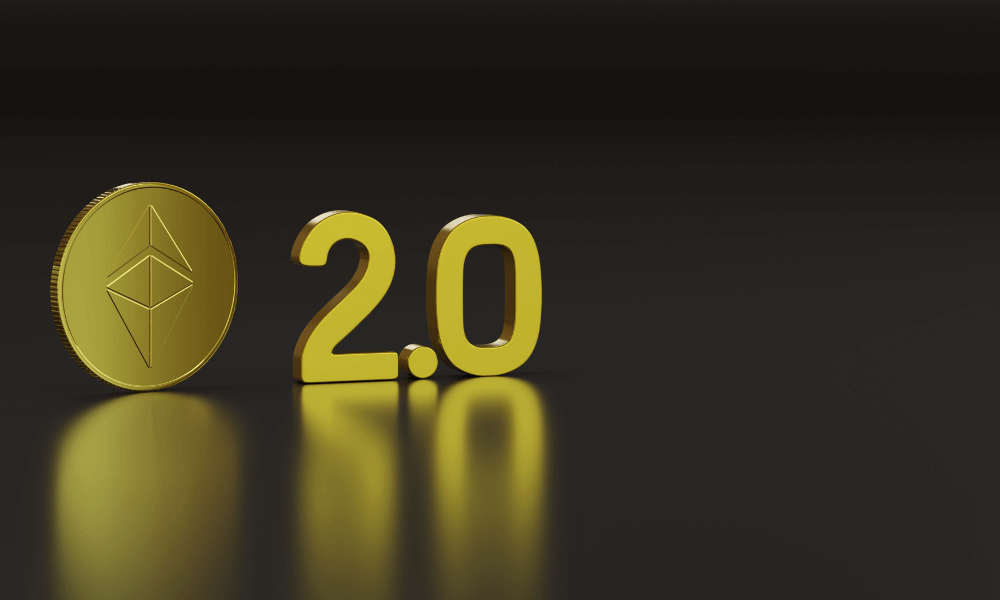
After enduring weeks of macroeconomic-driven nervousness, crypto traders are focusing on progress within the crypto ecosystem, particularly on smart contract blockchain Ethereum's impending proof-of-stake merge and the bullish implications for its native token, ether (ETH).
"I am very bullish on ether for the summer as ether staking would offer returns better than real or inflation-adjusted yields in traditional markets after the merge," Alex Kruger, a trader, and analyst told CoinDesk in a Telegram chat.
Last week, Ethereum developers successfully tested the long-awaited merge of the programmable blockchain's proof-of-work and proof-of-stake chains, dubbed Eth 2.0, which will allow users to hold coins in a cryptocurrency wallet to support network operations in return for newly minted coins.
Thus, staking is analogous to passive investing.
According to Kruger, ether staking yields are likely to be in the range of 10% to 15%. Blockchain analytics firm IntoTheBlock expects the yields to be higher than the U.S. consumer price index, which stood at a four-decade high of 7.9% in February.
"Through the merge with the proof-of-stake chain, fees previously earned by miners will pass on to being earned by those staking.
This is expected to result in staking rewards between 7% and 12%," IntoTheBlock said in its weekly newsletter published on Friday.
Investors are likely to prefer any asset or investment strategy offering positive real yields.
Most traditional investments are currently yielding negative returns when adjusted for inflation. In crypto, the popular bitcoin cash and carry trade now yields -4.9% in real terms, while depositing ether in the liquid staking protocol Lido yields an inflation-adjusted return of -3.9%.
With the merge test run completed successfully, researchers expect the mainnet launch to happen by the end of June. Observers foresee increased institutional adoption once the Eth 2.0 upgrade is complete.
"I'm quite optimistic. Estimates for post-merge yield are at 10% and above.
More News from ForexProp
Hungry Sausages Lab’s First NFT Collection Joins Hands With “Chef Nic Family”
Central Banks Face Tough Decisions After Russia’s Invasion
Colorado's Governor Wants To Be A Haven For Crypto As A 'Basic Convenience Thing
Plus, moving to proof-of-stake means it's easier for institutions to adopt it since they don't need to defend the energy consumption part of investment argument associated with bitcoin and proof-of-work coins," Ilan Solot, a partner at the Tagus Capital Multi-Strategy Fund, said in a Telegram chat.
The proof-of-stake consensus mechanism is more environmentally friendly than proof-of-work, which rewards miners with tokens for solving complex mathematical puzzles to validate transactions.
That process is energy-intensive. Some sources say bitcoin mining has a carbon footprint equivalent to developed nations, which has deterred institutions from adopting the cryptocurrency.
The U.S. electric-car maker Tesla suspended bitcoin payments last year, citing environmental concerns associated with mining.
"The Beacon Chain [deposit contract launched in December 2020] introduced staking but didn't change how Ethereum fundamentally works.
That all changes in 2022 when it merges with the mainnet, making the significant consensus change, reducing energy consumption by 99.95%, and eliminating a carbon footprint the size of Finland," Ruben Merre, CEO of crypto wallet GRAVE, said in a LinkedIn post.
Over 10 million ether are locked in the deposit contract, CoinDesk reported early this month.
Lastly, the merge is likely to make ether a deflationary, or store-of-value asset, a narrative primarily tied to bitcoin. "Following the merge, the amount of ETH issued is projected to drop by 90%, which would lead similar levels of fees to reduce ether’s supply by as much as 5% a year," IntoTheBlock noted.
Ether's pace of supply expansion has already slowed.
The Ethereum Improvement Proposal (EIP)-1559 implemented in August introduced a mechanism to burn a portion of fees paid to miners.
Since then, more than 2 million ETH – worth over $5.78 billion – have been destroyed, leading to a net supply reduction of 65.2%, according to data source Watch the Burn.
Some experts said the sharding upgrade due after the merge will be a more significant bullish catalyst. Sharding refers to splitting the entire Ethereum network into multiple portions called shards to spread the load.
The change is designed to ease network congestion and boost transaction speeds.
"After the merge comes sharding, through which scaling is facilitated," Laurent Kssis, a crypto exchange-traded fund (ETF) expert and director of CEC Capital, said.
"Will it signal that Ethereum’s status as the dominant Web 3 blockchain is truly deserved and sustainable?
 An Ultimate Guide An Ultimate Guide Day Trading Guide for Beginners |
The gas fee will not be instantly resolved, in my opinion, as interest could surge and hence gas fee too, but it will be exciting to watch first move advantage and ability to attract developers, there would be less reason for crypto projects to opt for any of Ethereum’s rivals.
"For me, it’s all about the speed of transactions using shard chains, making it much more energy-efficient and ultimately paying lower fees," Kssis added.
Ether rose 13% last week, the biggest gain in seven weeks, CoinDesk data shows. On March 15, more than 180,000 ETH were withdrawn from centralized exchanges, indicating a decline in the number of coins available for sale in the market.
"Last time such a magnitude of ETH left exchanges was in Oct 2021, preceding a 15% price increase within ten days," IntoTheBlock noted in its Telegram channel.
The cryptocurrency was recently trading near $2,900, representing a 1% gain on the day.
- CoinDesk